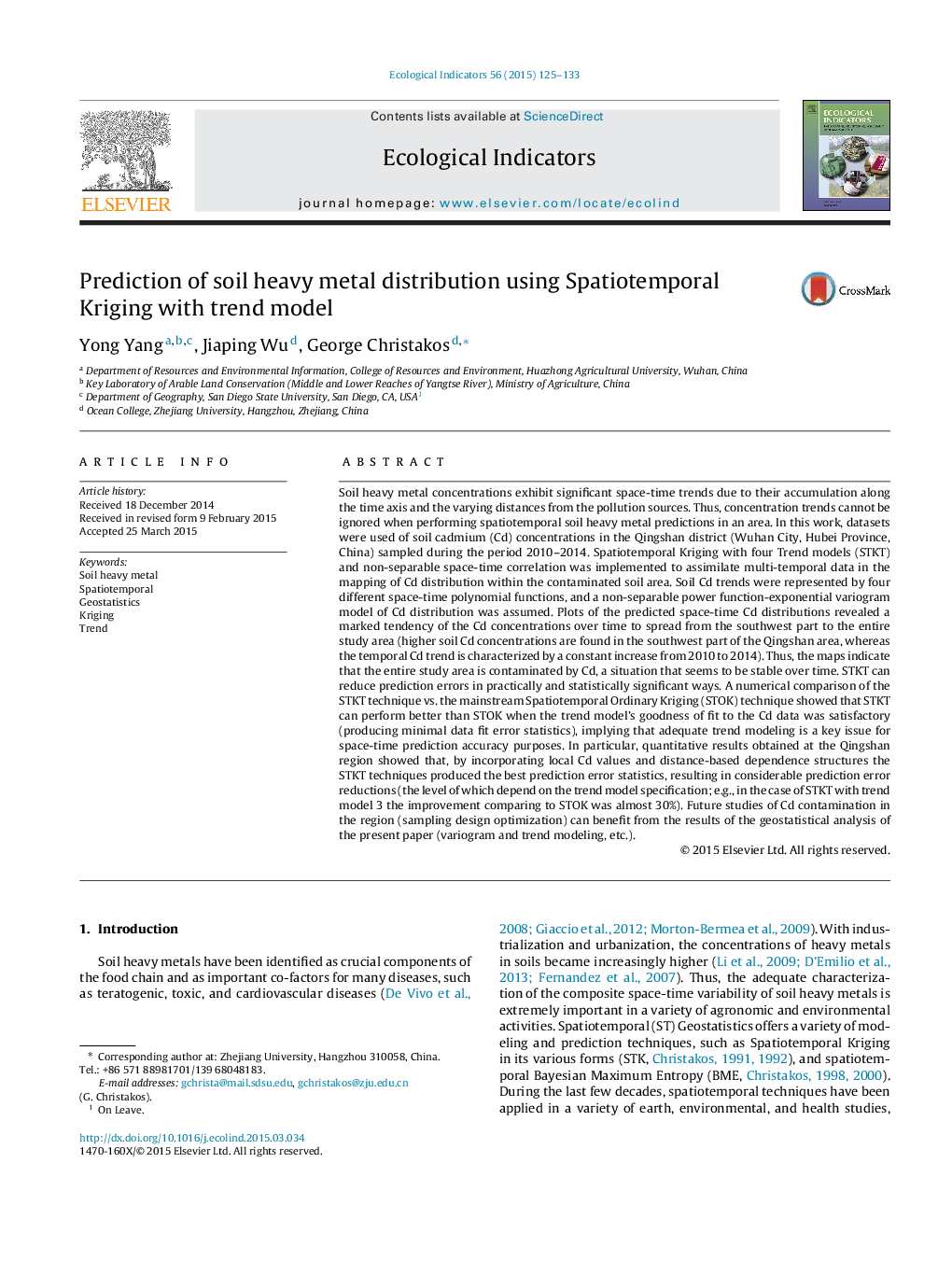| Article ID | Journal | Published Year | Pages | File Type |
|---|---|---|---|---|
| 6294342 | Ecological Indicators | 2015 | 9 Pages |
Abstract
Soil heavy metal concentrations exhibit significant space-time trends due to their accumulation along the time axis and the varying distances from the pollution sources. Thus, concentration trends cannot be ignored when performing spatiotemporal soil heavy metal predictions in an area. In this work, datasets were used of soil cadmium (Cd) concentrations in the Qingshan district (Wuhan City, Hubei Province, China) sampled during the period 2010-2014. Spatiotemporal Kriging with four Trend models (STKT) and non-separable space-time correlation was implemented to assimilate multi-temporal data in the mapping of Cd distribution within the contaminated soil area. Soil Cd trends were represented by four different space-time polynomial functions, and a non-separable power function-exponential variogram model of Cd distribution was assumed. Plots of the predicted space-time Cd distributions revealed a marked tendency of the Cd concentrations over time to spread from the southwest part to the entire study area (higher soil Cd concentrations are found in the southwest part of the Qingshan area, whereas the temporal Cd trend is characterized by a constant increase from 2010 to 2014). Thus, the maps indicate that the entire study area is contaminated by Cd, a situation that seems to be stable over time. STKT can reduce prediction errors in practically and statistically significant ways. A numerical comparison of the STKT technique vs. the mainstream Spatiotemporal Ordinary Kriging (STOK) technique showed that STKT can perform better than STOK when the trend model's goodness of fit to the Cd data was satisfactory (producing minimal data fit error statistics), implying that adequate trend modeling is a key issue for space-time prediction accuracy purposes. In particular, quantitative results obtained at the Qingshan region showed that, by incorporating local Cd values and distance-based dependence structures the STKT techniques produced the best prediction error statistics, resulting in considerable prediction error reductions (the level of which depend on the trend model specification; e.g., in the case of STKT with trend model 3 the improvement comparing to STOK was almost 30%). Future studies of Cd contamination in the region (sampling design optimization) can benefit from the results of the geostatistical analysis of the present paper (variogram and trend modeling, etc.).
Related Topics
Life Sciences
Agricultural and Biological Sciences
Ecology, Evolution, Behavior and Systematics
Authors
Yong Yang, Jiaping Wu, George Christakos,
